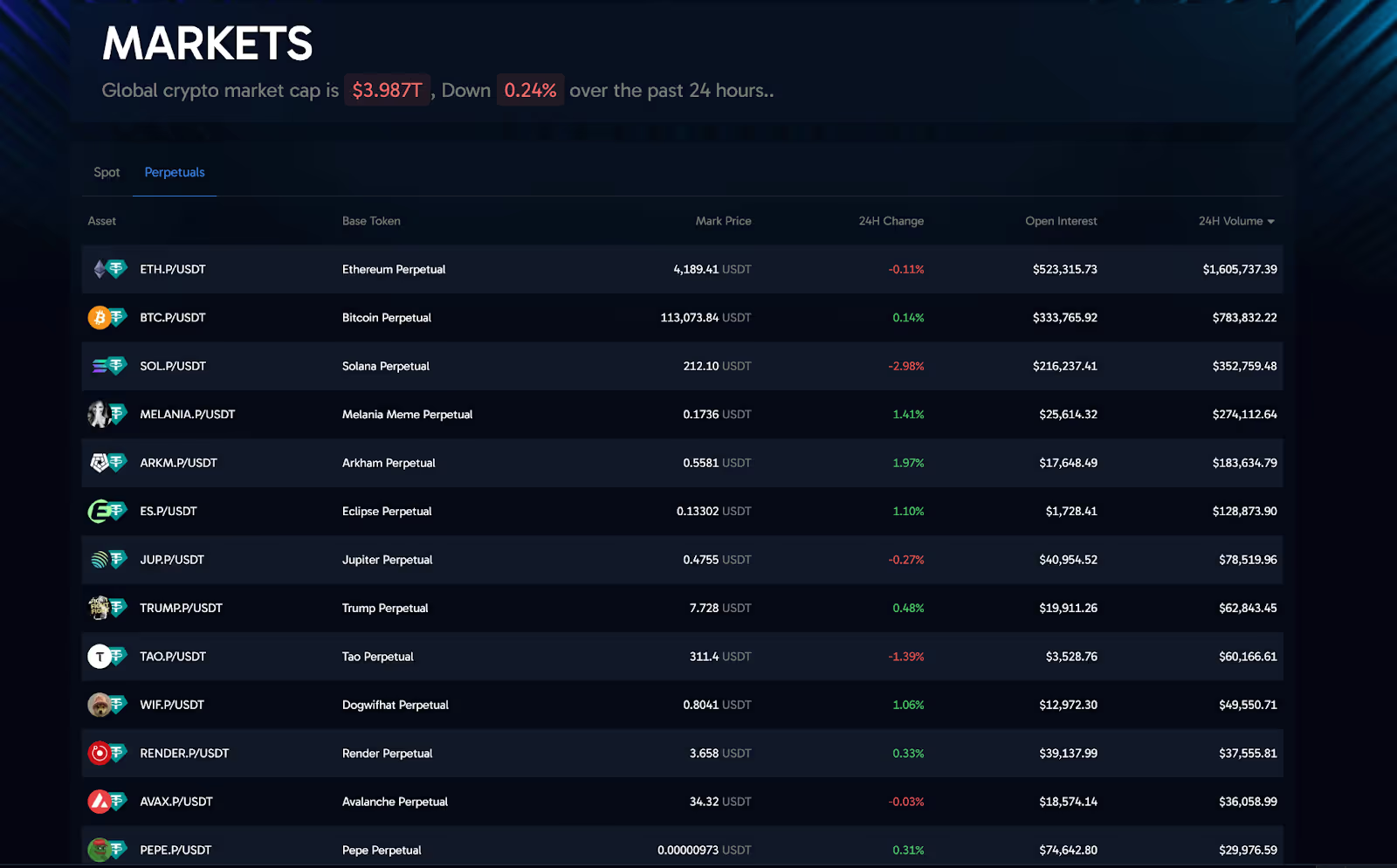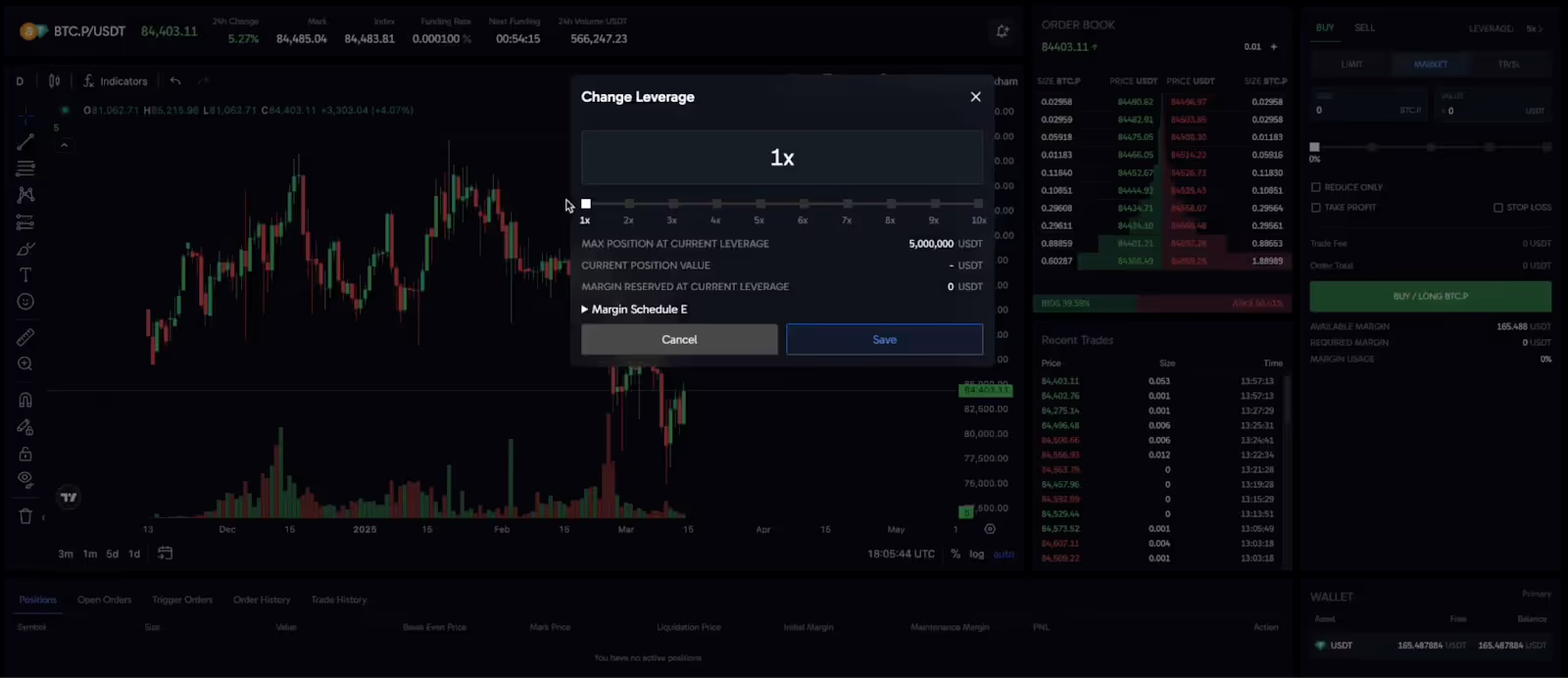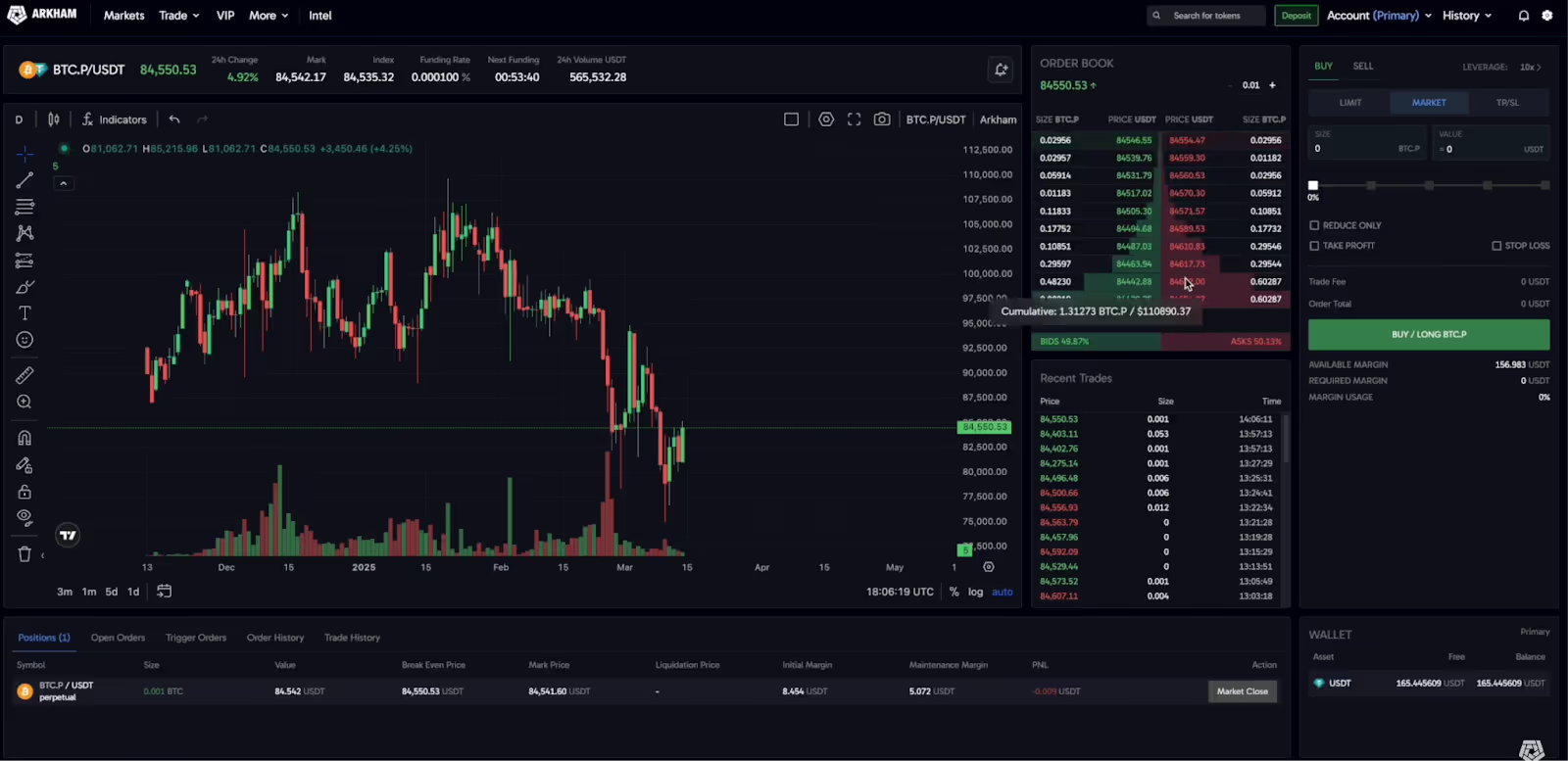September 30, 2025
at
10:20 am
EST
MIN READ
Perpetual Futures: What are they and how do they work?
Perpetual futures trading allows you to speculate on asset prices in crypto, like Bitcoin or Ethereum, using leverage. This means that traders can benefit when prices move up or down, and take on positions that are larger than their total capital. Because you are trading contracts related to the price of crypto rather than the actual crypto, you cannot withdraw the asset itself. Instead, any profits you make are paid out in your collateral currency (usually a stablecoin), which is then available for withdrawal.
How do perpetual swaps work?
A perpetual futures contract is a derivative product, meaning its value is based on an underlying asset, but it is traded separately on its own market. Because of this, the price of a perpetual price of an asset can differ from the spot price.
For the perpetual future to be useful, its price must closely track the spot price. The funding rate is the mechanism that ensures this happens.
How does the funding rate work?
- When the perpetual price is higher than the spot price, the market needs more sellers to bring the price down. To encourage this, the funding rate becomes positive, meaning traders who are long (buyers) must make small, regular payments to traders who are short (sellers). This incentive for sellers helps push the perpetual price back down towards the spot price.
- When the perpetual price is lower than the spot price, the market needs more buyers to bring the price up. To encourage this, the funding rate becomes negative, meaning short-sellers must make payments to long-holders. This incentive for buyers helps pull the perpetual price back up towards the spot price.
This ongoing system of payments between traders ensures that the price of the perpetual future stays closely in line with the true market price of the underlying asset.

What is leverage?
Leverage is a tool that allows you to open a position that is larger than the capital you deposit. For example, with $100 of your own money (margin) and 10x leverage, you can control a position worth $1,000.
Magnified profits
If the asset price moves 5% in your favor, your position gains $50 ($1,000 * 5%). This represents a 50% return on your initial $100 margin.
Magnified losses
Conversely, if the price moves 5% against you, your position loses $50, which is 50% of your initial margin.
Leverage significantly increases both potential profits and potential risks.
Market order and limit order definitions
When you enter or exit a trade, you use an order. The two most common types are:
- Market Order: An instruction to buy or sell immediately at the best available current price. This guarantees your order will be executed, but the price might be slightly different from what you saw when you clicked the button, an effect known as "slippage".
- Limit Order: An instruction to buy or sell at a specific price or better. A buy limit order will only execute at your limit price or lower, while a sell limit order will only execute at your limit price or higher. This gives you control over the price but doesn't guarantee execution, as the market may never reach your specified price.
Key trading concepts explained
Understanding these terms is crucial for managing your trades.
Margin: This is the collateral you put up to open and maintain a leveraged position.
- Initial Margin: The minimum amount you must deposit to open a position.
- Maintenance Margin: The minimum amount of collateral you must hold to keep your position open. If your margin falls below this level, you risk liquidation.
Liquidation: This is the forced closure of your leveraged position by the exchange. It happens when your losses get so large that your remaining margin is about to fall below the maintenance margin requirement. The exchange closes your position to prevent it from going into a negative balance.
- Liquidation Price: The price at which your margin is liquidated and your position is closed.
PNL (Profit and Loss): This shows how your trade is performing.
Volume: This refers to the total value of contracts traded over a specific period (e.g., the last 24 hours). High volume generally indicates high interest and liquidity in the market.
Can a trader ever lose more than their margin?
For most modern cryptocurrency exchanges, the answer is no. You cannot lose more than the initial capital you put into a trade.
When a position's losses approach the point where they would exceed the margin, the exchange's liquidation engine automatically closes the position. This is designed to prevent your account balance from going negative. Exchanges also maintain an "insurance fund" to cover any losses that might occur if a position is closed at a price worse than the bankruptcy price (a price at which the loss equals the entire initial margin).
Traders using Arkham Exchange to trade perps will never lose more than their margin.
Executing a trade and viewing the position on Arkham Exchange
Placing a trade on most exchanges follows a similar process.
- Navigate to the Perpetuals section of the exchange.
- Select the trading pair you want to trade (e.g., BTC/USDT).

- Choose the ‘BUY’ or ‘SELL’ tab. ‘BUY’ for long positions, ‘SELL’ for short positions
- Select Limit (for a specific entry price) or Market (if you want to enter at the current price).

- Adjust your leverage (e.g., 5x, 10x).

- Enter your order details such as the size or value of the position in the order panel.
- Click "BUY / LONG" or "SELL / SHORT" to place your order.
Once your order is executed, your trade will appear in the "Positions" tab below the chart. Here you can monitor all critical information in real-time, including:
- Mark Price: The price used to calculate your PNL and trigger liquidation.
- Liquidation Price: The price at which your position will be automatically closed.
- Initial Margin: The amount of collateral allocated to this position.
- Maintenance Margin: The minimum amount of collateral you must hold to keep your position open. If your margin falls below this level, you risk liquidation.
- PNL: Your current profit or loss on the open position.

How to close a position
You can close an open position in a few ways:
Market Close: The simplest way is to click the ‘MARKET CLOSE’ button on your open position. This will close your position immediately at the current best available market price.
Take Profit: To close your position at a specific target price, you can place a limit order in the opposite direction of your trade. For example, if you are in a long position, you would place a sell limit order at your desired profit-taking price.
- Reduce Only: This is a safety feature that, when selected, ensures the order can only reduce or close your existing position, preventing it from accidentally opening a new position in the opposite direction. For example, if you're long $4,500 and place a "Reduce-Only" limit sell order for $5,000, the order will only close your $4,500 position and will not open a new $500 short position.
Stop-Loss Order: This is a crucial risk management tool. It's an order that automatically closes your position at a predetermined price to limit your losses. For a long position, you would set a stop-loss sell order below your entry price. For a short position, you would set it above your entry price.





























































































































































































































.png)